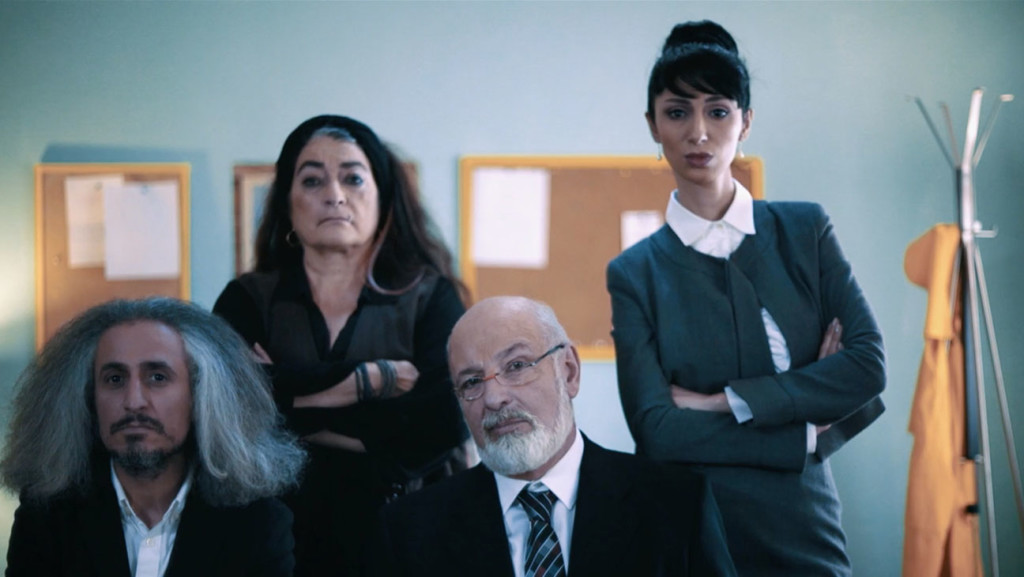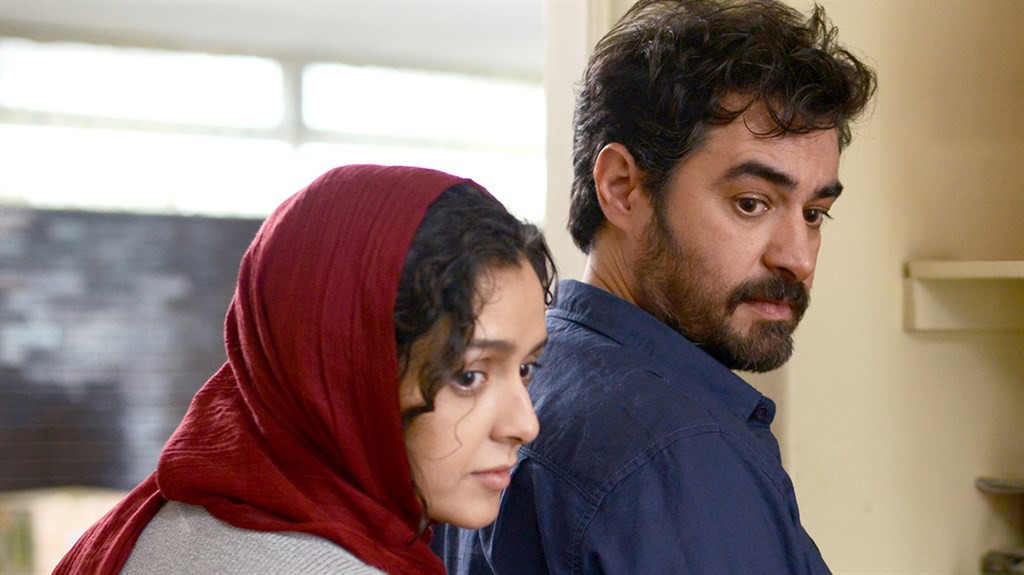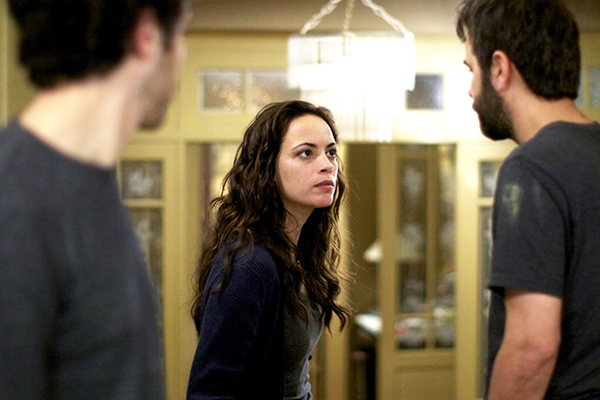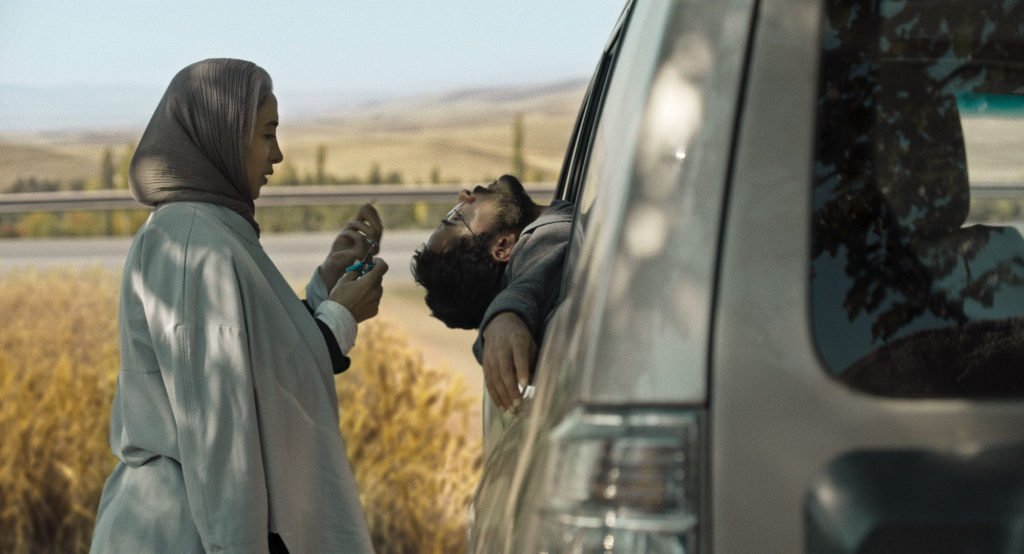
In Hit the Road, we join an Iranian family’s road trip. It’s a relatively uneventful journey through barren countryside, but it’s unforgettable because of the characters and the reason for their trip. Their motivation is more loaded than it first appears.
The 20-year old Big Brother (Amin Simiar) is driving the little four-door hatchback sedan, with Mom (Pantea Panahiha) in the front seat. Dad (Hasan Majuni) is sprawling in the middle of the back seat, his leg in a massive cast. The six-year-old Little Brother (Rayan Sarlak) is bouncing around the back. An old dog (literally on his last legs) is in the way-back.
The first thing we notice us that the little kid is very precocious and a tornado of energy, a naturally caffeinated rascal. He has no volume modulation dial, and this kid is going full blast all the time. Fortunately, he is really smart and mostly funny, and his parents have built up a tolerance, so they don’t bind and gag him (which, admittedly, briefly crossed my mind).
The second thing we notice is the banter between the mom, dad and little kid. They are sarcastic, always teasing, and hilariously deadpan. Everyone is constantly tossing off playful threats. Everyone, that is, except for Big Brother, who sits behind the wheel in stoic silence, steeped in melancholy.
That’s because he knows the real reason for the trip, which the parents have not truthfully disclosed to the kid brother. That reason is never made entirely explicit, but there’s a telling clue over halfway through.
[MILD SPOILER: Suffice it to say, sometimes parents must lose their child to save him.]
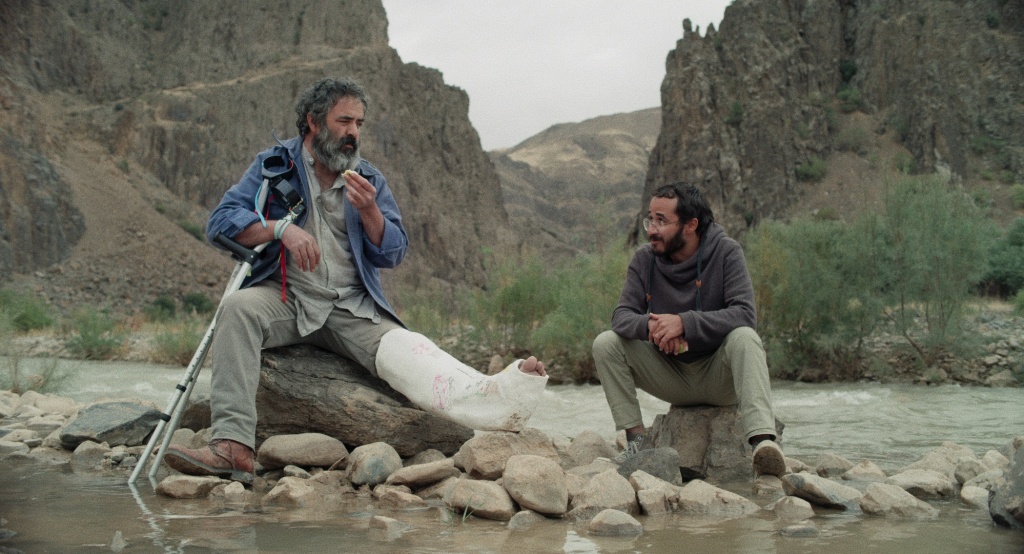
The acting is top-rate. Hasan Majuni is perfect as the dad, a guy you can imagine holding forth in front of the TV and bellowing, “Hey, bring me a kabob”. He is jovial and commanding, even when hobbling along on his cast. But when the dad is unwatched by anyone else, his thoughts are of what is ahead for his family – his look intensifies as it takes on loss, determination, grief and resignation.
Pantea Panahiha is just as excellent as the mom, caustically funny, but with strong emotions sometimes leaking out. She’s just trying to make sure the little kid doesn’t notice.
The Wife liked Hit the Road even more than I did. I found this especially significant since I generally enjoy both international cinema and challenging films more than she does. She particularly admired and was drawn in by the acting, especially by Majuni and Panahiha.
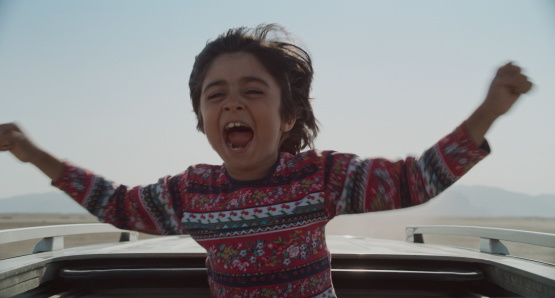
Hit the Road is the first feature for writer-director Panah Panahi. Panahi clearly has a gift for making the most from a low budget, a tiny cast and a bleak landscape.
Hit the Road premiered at Cannes’ Directors Fortnight and then took to the festival circuit, including SFFILM 2022. It is now in theaters.

